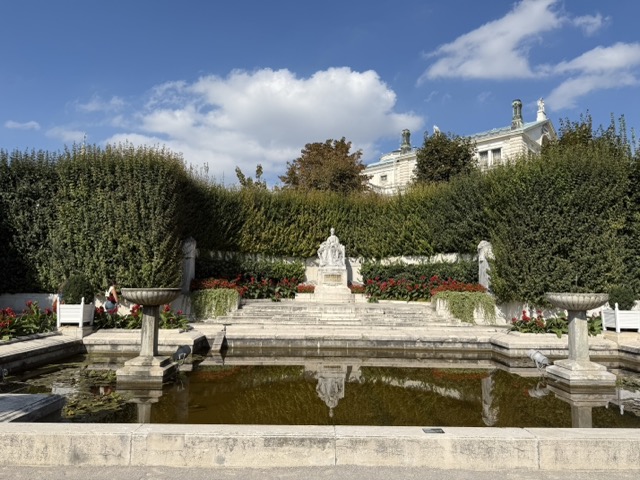Experience Travel Insights
Empress Sisi: Rebel in a Gilded Cage
by Long Lin-Maurer • September 23, 2025

Empress Sisi: The Reluctant Icon and Her Search for Self
In the grand tapestry of European royalty, few figures captivate the modern imagination like Empress Elisabeth of Austria, affectionately known as Sisi. Her image, immortalized in films, is one of fairytale romance: a beautiful Bavarian duchess who captured the heart of an emperor. Yet, to walk through the Imperial Apartments of the Hofburg Palace in Vienna is to encounter the ghost of the lonely empress. The real Elisabeth of Wittelsbach was a woman of profound complexity—a poet trapped in protocol, a fitness fanatic in an era of corseted restraint, and a restless soul who found her gilded cage unbearable. To truly understand the twilight of the Habsburg Empire, one must look beyond the myth of Empress Sisi and discover the melancholic, fiercely independent woman at its heart.
From Duchess Elisabeth in Bavaria to a Gilded Cage
Elisabeth’s story begins not in Vienna’s rigid halls, but in the idyllic Bavarian countryside at Possenhofen Castle. Raised with unparalleled freedom for 19th-century royalty, the young Duchess Elisabeth in Bavaria spent her days riding horses, hiking, and writing poetry. Her world was starkly at odds with the one she was about to enter.
Come and experience travel!
Personally designed, seamlessly delivered – your journey, our expertise!
We are a boutique travel agency and consultancy specializing in Hub & Spoke Tours across Central Europe, the Benelux and the Dolomites.
Her fate was sealed in 1853 in Bad Ischl. Emperor Franz Joseph I, aged 23, was meant to marry her older sister, Helene. But upon seeing the vivacious, 15-year-old Sisi, he was instantly smitten, declaring he would marry her or no one. Catapulted into the epicenter of a vast empire, Elisabeth of Austria was utterly unprepared. The Viennese court was governed by unyielding etiquette that dictated her every move. Her formidable mother-in-law, Archduchess Sophie, saw it as her duty to mold the young empress into a perfect Habsburg consort. For Sisi, this was not a dream fulfilled, but a sentence to a life of suffocating performance.
The Cult of Beauty: A Shield for Austria’s Empress
Trapped in a role she never desired, Kaiserin Elisabeth found one domain where she could exert absolute control: her own body. This manifested as an obsessive, lifelong cult of beauty that became her shield and private rebellion. She was one of the most beautiful women of her time and worked tirelessly to maintain it.
Her most famous feature was her magnificent, ankle-length hair, which required hours of daily care. The elaborate coiffures were so heavy they often gave her headaches. This was not mere vanity; it was a ritual of self-preservation for Sisi of Austria. She also maintained a famously tiny waist through punishing corsetry and a diet that bordered on starvation.
Beyond diet, she was a fitness pioneer. She had a gymnasium installed in her private chambers at the Hofburg—a scandal at the time. She was a ferocious walker, embarking on grueling hikes that exhausted her entourage, and an accomplished fencer. Her body became her masterpiece, armor against a world that sought to possess Austria’s Empress completely.
A Poet’s Heart and the Soul of a Wanderer
While the court saw only the stunning Empress, Sisi’s inner world was turbulent and melancholic. A prolific poet writing under the pseudonym “Titania,” her verses reveal a sharp mind that saw through the pomp of her imperial existence, full of yearning for a freedom she would never know.
This yearning found an outlet in travel. Sisi was a perpetual wanderer, using her delicate health as a pretext to flee Vienna. She found a spiritual home in Hungary, where the rebellious spirit of the Magyar nobility resonated with her own. Embracing their culture, she became a powerful advocate for Hungarian autonomy and a beloved Queen of Hungary. Her bond with statesman Count Gyula Andrássy is a subject of speculation, but in Hungary, she found a purpose she never felt in Austria. Her ultimate sanctuary was the Achilleion Palace, a magnificent residence she built on the Greek island of Corfu, a monument to her obsession with beauty and tragic destiny.
Come and experience travel!
We design bespoke travel experiences with a perfect balance of cultural depth, efficiency and comfort.
Specializing in seamless hub-and-spoke journeys, we create well-paced, immersive itineraries tailored to your interests.
The Mayerling Incident and the Empress in Black
Sisi’s life was marked by profound tragedy. The death of her firstborn daughter was a loss from which she never recovered. But the blow that shattered her world came in 1889 with the Mayerling incident. Her only son and heir to the throne, Crown Prince Rudolf, was found dead with his young mistress in an apparent murder-suicide.
Rudolf’s death broke something fundamental in Elisabeth. She withdrew almost entirely, dressing only in black for the remainder of her years. The veil she wore was a final barrier between herself and a world she could no longer bear. Her travels as the reluctant empress became more frantic, her melancholy more profound, a ghost haunting the spas of Europe.
The Tragic End and Legacy of Elisabeth of Austria
The final act of Elisabeth’s life played out on the shores of Lake Geneva in 1898. She was stabbed with a sharpened stiletto by an Italian anarchist, Luigi Lucheni. The wound was small, and her tight corset initially prevented her from realizing the severity of the injury. It was a senseless, random end to a life defined by a search for meaning.
Today, tracing the footsteps of Empress Sisi through Vienna reveals this complex legacy. In the Sisi Museum at the Hofburg, one sees glittering gowns juxtaposed with her mourning dress and the assassination weapon. Each location tells a part of her story, revealing the chasm between the public empress and the private woman. Empress Elisabeth of Austria remains an object of fascination not as a fairytale princess, but as a deeply human figure struggling with the conflict between duty and personal freedom. To understand her is to understand the soul of a dying empire—a world of dazzling opulence and deep, unspoken sorrow.
- The Sisi Museum, Vienna: An authoritative overview of Empress Elisabeth’s life and the museum dedicated to her.
- Elisabeth, Empress of Austria (Austria-Forum): A comprehensive encyclopedic entry on her life and reign from a respected Austrian source.
- Sisi at the Hofburg Palace: Contextual information about her life within the Imperial Hofburg residence.
- Elisabeth, Empress of Austria (Britannica): A concise, scholarly biography from a renowned international encyclopedia.
- Sisi the Poet (The World of the Habsburgs): An insight into Empress Elisabeth’s lesser-known literary pursuits and poetic works.
- Hermesvilla: Sisi’s Palace of Dreams: Discover her personal retreat, the Hermesvilla, in the Lainz Game Preserve.
- Empress Elisabeth of Austria: Personality and Image (Wikipedia): A comprehensive overview of her complex personality and public image, with extensive references.
- The Sisi Road Cultural Route: Explore the European cultural route tracing the life and residences of Empress Elisabeth.
- The Athletic Empress: Sisi’s Passion for Sport: Her fervent dedication to sports, particularly riding and gymnastics.
- The Sisi Myth (The World of the Habsburgs): An analysis of the enduring ‘Sisi myth’ and its historical origins and impact.
